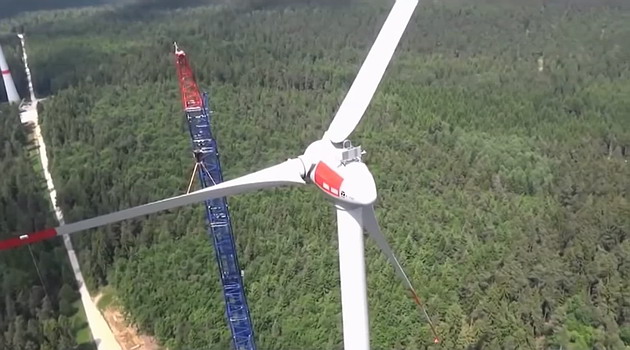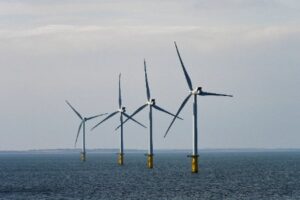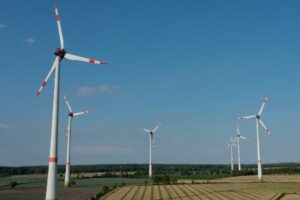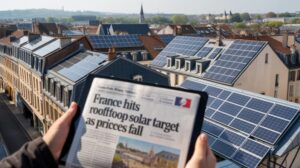18 Pros And Cons Of Wind Energy

Wind energy has become today the second-fastest growing source of clean electricity on the planet (after solar energy).
Wind energy is produced using the kinetic force of the wind that rotates a turbine and creates clean electricity with the help of a generator.
In today’s article I will present the most important pros and cons of wind energy.
Wind energy can be produced during the day, but also during the night (does not require a clear sky and the presence of the Sun).
However, wind energy is not a continuous source of energy (the speed of the wind fluctuates from one day to another), so the output of the wind turbines differ from one day to another or even in the same day from one hour to another.
To solve the problem, the wind turbines are usually connected to conventional generators in the grid, and when the wind has a good speed, the production of clean electricity reduces the load of the generators.
A different way to use the clean power produced by wind turbines is to store the energy in large battery systems, and use this energy as a constant supply of electricity in the grid.
Wind energy is a renewable energy source because the wind is generated by the Sun and is a clean energy source that produces no harmful emissions, so is a perfect source of clean electricity for the green future that will follow.
Using wind energy as a source of clean electricity has many advantages, but also a few disadvantages related to the environment and the comfort of the people living close to a wind turbine.
Pros of Wind Energy
The kinetic energy of the wind that can turned into clean electricity has a pretty impressive number of advantages.
1. Wind Energy is a Cost-Effective Source of Electricity
Wind turbines are connected to the grid to provide clean electricity to a large number of consumers.
We don’t need to buy a wind turbine to generate and use wind energy at home, this clean energy can be provided by the utility company if the grid is connected to a wind farm.
This way we can use wind energy to power our daily activities without even realizing that this is happening, and at the end of the month the energy bill will have the same value as if we have used conventional energy.
2. Wind Energy is a Renewable Energy Source
Wind is produced by the fact that the Sun heats the different layers of the atmosphere unevenly, which makes the warmer air to go up in the atmosphere and the colder air to go down to replace the warmer air.
These movements of the layers of air in the atmosphere are generating the wind on planet Earth.
The Sun will be here for another 5 billion years (according to NASA), so we can say that wind and solar power can both be considered renewable energy sources.
3. Wind Energy is a Source of Clean Power
Wind energy is produced by wind turbines that are using the kinetic force of the wind to rotate the blades of a turbine and produce clean electricity using generators.
The entire process of producing wind energy does not involve the release of harmful emissions into the atmosphere, which means that wind energy is a clean source of electricity that can reduce our dependence on conventional, but dirty energy produced by burning fossil fuels.
4. Wind Energy Has A Huge Potential To Generate Clean Electricity
The capacity to generate wind energy increases every year and the price of the technology goes down and becomes competitive with the fossil fuel resources.
Harnessing wind energy can be done almost everywhere in the world where the wind blows.
Due to the fact that the technology used to produce wind energy becomes more affordable every year, the wind power sector increases its wind power capacity year after year due to the numerous investments in the field.
5. Wind Energy is Space-efficient
Wind turbines cannot be placed very close one to another, but the land between the turbines can be used for other purposes.
Unlike solar panels, wind turbines produce a very thin shadow that does not affect the soil or the crops.
Due to this fact, many farms can increase their revenues by placing wind turbines on their land between crops.
Some of the largest wind turbines on the planet can produce enough electricity to power about 600 U.S. households, but even so, the large wind turbine will occupy a small surface of land, and will not affect the surrounding crops.
6. Wind Energy Could Represent A Good Investment for Landowners
Landowners have a chance to produce an extra income if they agree to placing wind turbines on their lands.
Any land with good winds that is located at a safe distance from any house can be used as land for placing wind turbines.
The landowners can have crops on the land, but with the placement of at least one large wind turbine, the income generated by the land will grow to a new level.
7. Decreasing Prices
Wind energy uses a technology that is becoming cheaper year after year.
Since the year 1980, the price has been decreased 80%, and with the current level of technological development in the field, the prices will decrease even more, and will make wind energy one of the cleanest and the cheapest sources of electricity on the planet.
8. Low Running Costs
The operational costs of the wind turbines are pretty low once the turbines have been manufactured and installed.
If the wind blows regularly, the turbines will work and produce clean electricity for the grid, and the maintenance service will be pretty simple.
However, every wind turbine is somehow unique in its own way, so some turbines could require more maintenance than others.
9. Wind Energy Has A Rapid Growth Today
Wind energy accounts for about 2.5% in the global electricity production, and lately has a growth rate of about 30% per year.
The fact that wind power is a clean and renewable energy source that can reduce the volume of greenhouse gas emissions released into the atmosphere yearly, will generate a rapid growth in the sector, which will propel the wind power to a share of 20% in the world’s energy mix in 2030.
10. Great Domestic Potential
Wind energy is a free and clean energy source that can be harvested by anyone.
To generate wind power at home, you can buy a small wind turbine for domestic use, which will generate clean electricity day and night if the wind blows.
A wind turbine is cheaper than a solar PV system and can produce electricity not only 5 hours a day, but during the entire day and night if there is enough wind outside.
Net metering is available now in many countries of the planet (including the U.S.) and this allows the homeowner to receive credits if his electricity production exceeds the consumption, and this way he can save money on energy bills pretty easy.
Being a free and clean energy source, wind energy has the capacity to create energy independence for the homeowner.
Cons of Wind Energy
Wind energy produces a few drawbacks as well.
1. Wind Energy Is An Intermittent Source Of Energy
Wind energy is not a constant source of clean power because there are days with good wind and days without wind at all.
Due to this situation, wind energy cannot feed the electrical grid directly, can be used to help the grid when needed (when the demand is high) or can be turned into a constant source of clean power with the help of a battery system that can store the energy produced by the wind turbines for later use.
2. Wind Energy Represents A Threat To Wildlife
From time to time, some birds and bats could collide with the rotating blades of a wind turbine, which usually kills them.
The only way to overcome the issue is to use vertical wind turbines.
3. Requires Governmental Incentives
In order to make wind energy competitive in a market controlled by energy produced from fossil fuels (coal, oil and natural gas) both utility-scale wind farms and also residential wind turbines will rely on financial incentives provided by the government.
4. Visual And Noise Pollution
Some people feel disturbed when seeing a wind turbine or a wind farm, whether it is located onshore or offshore, while others seem to like them.
However, people living close to a wind turbine or a wind farm could hear the sound created by the turbine (between 50 and 60 decibels), and could be affected by the noise pollution created by the rotating blades of the turbine.
5. Expensive Technology
I mentioned earlier that a wind turbine has low running costs, but building and installing the turbine is a different story.
The price of the wind turbine and the installing costs are pretty high (that’s why they are subsidized).
6. Hazardous To People
A large wind turbine has its own systems to block the rotation of the blades, but even so, during a storm or in the days with very strong winds, the turbine could be damaged and even destroyed causing fires in the area.
Also, a wind turbine that is malfunctioning could fall off the pole and hit people, animals or goods located underneath or nearby the turbine.
7. Can Be Used Only In Places With Good Winds
Wind turbines can produce clean power only if the speed of the wind is high enough.
This is the reason why wind turbines are usually located in remote areas with no natural obstacles (buildings, large trees, hills, mountains).
The fact that the good winds can be found only in remote areas or offshore, increases the value of the investment with the required infrastructure (power lines to transport the electricity in the city).
8. Environmental Impact
Besides the fact that wind turbines often kill birds and bats or can cause visual and noise pollution for some people, they are often placed in areas that were formerly covered by trees, which were cut to make room for the wind turbine.
Final conclusion
Wind energy has today several advantages, but also a few disadvantages.
However, I’m sure that the technological development in the field will solve almost all the above problems caused today by wind turbines to people and the environment, which means that wind power will finally become an energy source of the future.






